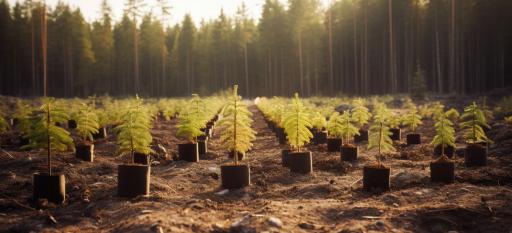The current results of the Austrian forest inventory impressively show how important active forest management and increased use of wood are in order not only to meet the challenges of climate change, but also to do justice to the pioneering role of the Austrian paper industry as a lighthouse sector of the bioeconomy.
According to the 2018/23 forest inventory, both the forest area and wood stocks have increased significantly since the evaluation began in the 1960s. With a forest area of 4.02 million hectares, Austria is one of the most forested countries in Europe. At the same time, climatic changes such as drought and pest infestation show the need to actively manage forests and make them climate-fit.
The documented positive development of the domestic forest supply, which currently accounts for 48 percent of Austria’s national area, would not have been possible without sustainable management through the forest-wood-paper value chain. Wood and paper products not only contribute to the reduction of fossil raw materials, but also bind CO2 in the long term, thereby actively contributing to climate protection.
Best possible use of the valuable resource wood
“The Austrian paper industry only uses fibers from sawing by-products or thinning wood in production and leaves the logs for timber construction, where carbon remains bound for decades,” explains Kurt Maier, Austropapier board member and strategy group member of the FHP initiative, a unique association across the entire value chain in Europe Forestry wood paper. Carbon storage in wood is highest when trees are 40-60 years old. In the future, this will mean making greater use of old stands in order to expand and optimize the storage of CO2 in young forests and to promote defossilization.
The Austrian paper industry has established itself as a pioneer for sustainable business in the sense of the bioeconomy. “Without active management, our forests lose their vitality and adaptability. Only through targeted measures such as thinning and regeneration can we ensure that our forests remain climate-friendly and continue to store CO2,” explains Maier. The paper industry in Austria relies on the very resource-saving use of fresh fibers. With a recycling rate of over 86 percent, Austria is a leader in fiber-based circular economy in Europe.
Wood-based industry as a cornerstone of climate protection
Austropapier demands that the future federal government commit to active forest management so that the availability of raw materials is not restricted. An end to the excessive bureaucratization in Austria and the EU is urgently needed in order to make forest maintenance and forest conversion possible to preserve forest biodiversity. In accordance with the principle of subsidiarity, it must be left to the EU member states to specifically rejuvenate forests by increasing the extraction of wood from older stands. “Our forests and the wood-based industry are cornerstones in the circular economy and climate protection. Only together can we secure jobs, replace fossil raw materials and thus create a sustainable future for Austria’s forests,” Maier concluded.
OTS ORIGINAL TEXT PRESS RELEASE UNDER THE EXCLUSIVE RESPONSIBILITY OF THE SENDER FOR CONTENT – WWW.OTS.AT | AOP
